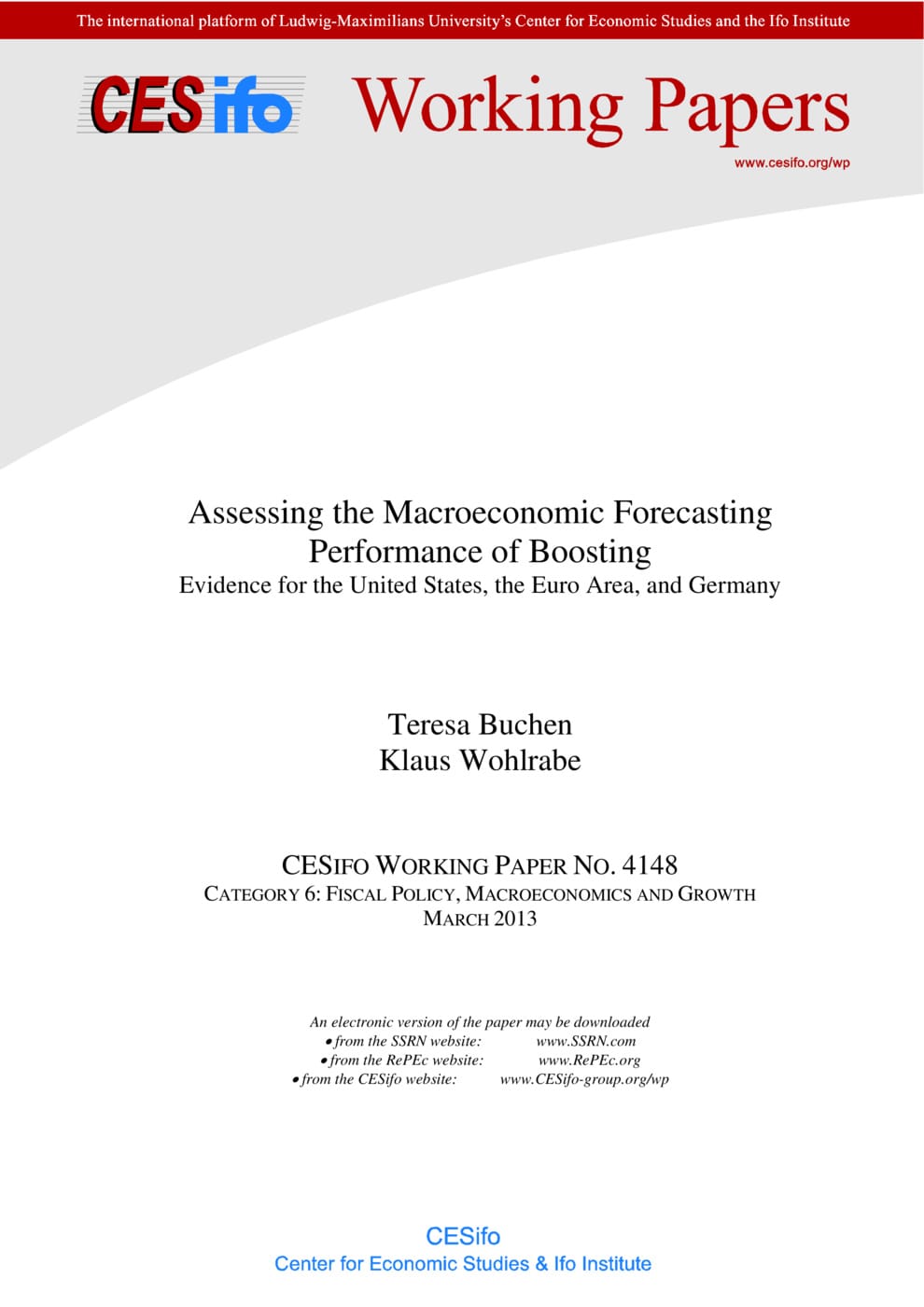Assessing the Macroeconomic Forecasting Performance of Boosting - Evidence for the United States, the Euro Area, and Germany
CESifo, Munich, 2013
CESifo Working Paper No. 4148

The use of large datasets for macroeconomic forecasting has received a great deal of interest recently. Boosting is one possible method of using high-dimensional data for this purpose. It is a stage-wise additive modelling procedure, which, in a linear specification, becomes a variable selection device that iteratively adds the predictors with the largest contribution to the fit. Using data for the United States, the euro area and Germany, we assess the performance of boosting when forecasting a wide range of macroeconomic variables. Moreover, we analyse to what extent its forecasting accuracy depends on the method used for determining its key regularisation parameter, the number of iterations. We find that boosting mostly outperforms the autoregressive benchmark, and that K-fold cross-validation works much better as stopping criterion than the commonly used information criteria.
Fiscal Policy, Macroeconomics and Growth
Monetary Policy and International Finance